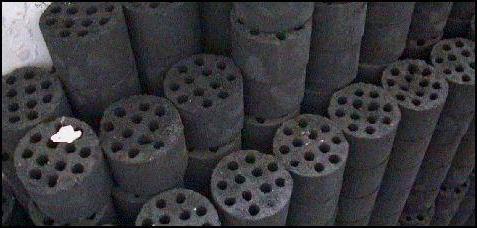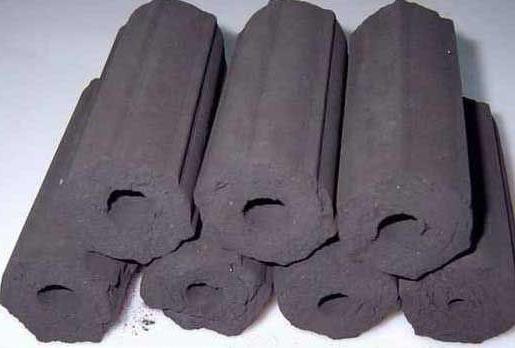Constantly increasing prices for energy and fuel are forcing consumers to more carefully approach their choice or find alternative options to save money and at the same time achieve maximum return on investment. In our time, this is not easy to do, because there are plenty of offers on the market, in addition, new technological types of calorific materials often appear, so you have to study existing options so as not to throw money away.
Charcoal briquettes: varieties of raw materials
The relatively low price, ease of manufacture, affordability and efficiency of fuel briquettes have led to increasing popularity among consumers and their widespread distribution. Meanwhile, there are varieties of this type of fuel according to the raw materials used, as well as the shape of the final product.

Coal briquettes for heating are made from different types of coal, such as:
- brown (the most common and cheapest option);
- wood (more complex manufacturing technology, involving the use of additional equipment);
- Anthracite (the most expensive, but also the most effective raw material: the best indicators of heat transfer).
For the production of briquetted fuel does not require high quality raw materials. For this purpose, coal dust and fines are quite suitable, as well as waste that is poorly sintered, falls through the grate and is not suitable for direct use in furnaces or coke production.
Bonding agents
As a binder, you can use various components that affect the quality and characteristics of the final product. These are substances such as:
- coal tar;
- clay;
- soda;
- syrup;
- resin;
- dextrin;
- lime;
- protein and many others.

The choice of a binder component directly depends on the type of main raw material and its quality. Also, depending on the application of this or that component, the briquette production technology and its complexity will change.
What are
Coal briquette is a solid fuel product made in the form of bars of various configurations and sizes, which are pressed under high pressure and temperature. For bonding particles of raw materials and the strength of products, cementitious components are used, which can be organic and inorganic.

The efficiency of this energy carrier lies in its heat transfer parameters and burning duration, which are higher than that of ordinary coal. The shape and density of the briquettes are also important for efficiency, because thanks to them, this fuel maintains uniform predicted burnout and maintaining a constant temperature throughout the entire combustion process. The waste in the form of ash remaining after attenuation is only 3%, for traditional coal this figure is 10 times higher, while the briquettes do not fall apart in the furnace until they completely burn out.
Where it is applied and where it is impossible to use
It is mainly used for heating needs in everyday life, but recently it has been more often used at metallurgical and chemical enterprises, as well as power plants and boiler houses. In general, briquettes can be used at any enterprise or in a private house where equipment operating on solid fuel is installed - coal, firewood, etc.
But you should be aware that in no case should you use a coal briquette to make fire in barbecues, grills and other stoves for cooking, on which direct contact of smoke with food occurs. Such equipment is simply not designed for the temperature produced by this fuel, and it will fail, and the excreted caustic and harmful substances, contained in coal will make food unfit for consumption.
Industrial Production
Since the manufacturing technology differs slightly depending on the type of binder, one can consider the production of coal briquettes based on the most commonly used component - coal tar (coal tar).

Initially, the raw materials are washed from weeds, and then crushed and dried to the required parameters. To this end, it is poured into the crusher through the receiving hopper, and then, through the auger, enters the dryer. The dried coal fines are sorted into fractions: coals from 0 to 6 cm in size go to the mixer, and large ones go to the grinder again. After calibration, a binder is added to the prepared base material in the mixer.
When the necessary components are loaded, they are mixed into a homogeneous mass, which is distributed over the cells of the molds, where, using hot steam and high pressure, the resulting mixture turns into a coal briquette. The resulting products are transferred to cooling bins for 8 hours. Screening of defective forms and subsequent packaging in 25 kg bags complete the production process.
Do-it-yourself coal briquettes
For these purposes, you can use a hand press or a homemade screw extruder. It is also possible, for lack of equipment, to do this manually. Unlike the factory manufacturing process, at home, instead of drying the coal fines, on the contrary, it is mixed with water. No need to add a binder. The main thing is to observe two conditions:
- coal fraction - not more than 6 cm and the smaller the better;
- the resulting mass must be plastic and thick so that it can be molded by hand or briquetted in a mold using a hand press.
After the briquetting process, the products should be well dried. It should be noted that the coal briquette obtained using manual pressing is unsuitable for transportation, since it is more fragile than the factory one. Also, the manual method has very low productivity: it will take a lot of effort and time to prepare fuel for the entire season.

Using an extruder speeds up the briquetting process, and the quality of the products is much higher than with a manual manufacturing method. Here you just need to fill up the raw materials in the hopper and get finished products of high quality that are suitable for transportation. However, the cost of the unit itself and its components (electric motor, gearbox, etc.) are high and not everyone can afford it.








